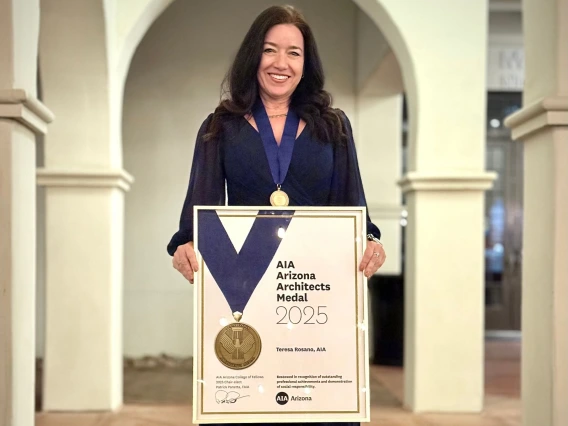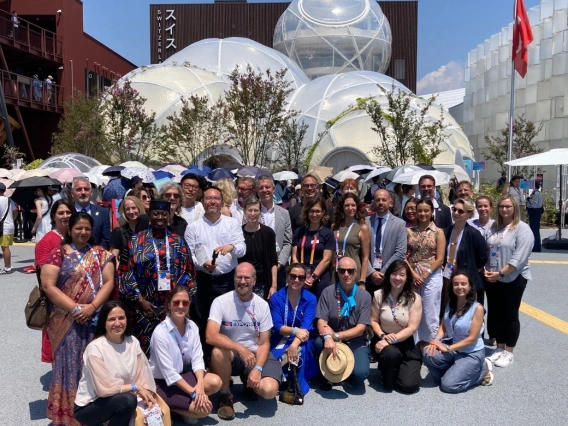Is Tucson’s Water Secure? CAPLA Researchers Compare the Old Pueblo with Cities in Mexico and Argentina to Find Out
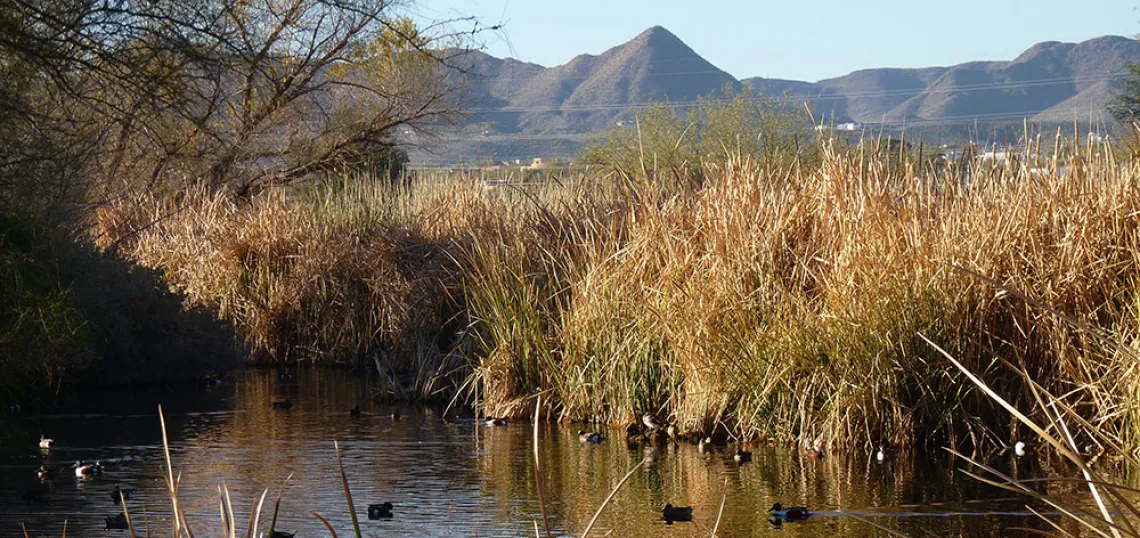
The Sweetwater Wetlands water treatment facility in Tucson, Arizona. Photo by I Bird 2 (CC BY-NC 2.0).
When it comes to urban water security, Tucson, Arizona has more in common with cities in Mexico and Argentina than one might expect. The conclusion for all three: there’s more water insecurity than security.
According to research undertaken by faculty in the College of Architecture, Planning and Landscape Architecture at the University of Arizona and published earlier this year in Environment & Urbanization, there are several areas in which Tucson resembles Hermosillo, Sonora, Mexico and Mendoza, Argentina—beyond their similar sizes and arid settings.
For instance, say Adriana Zuniga-Teran, assistant research scientist at CAPLA and the UArizona Udall Center for Studies in Public Policy, and Philip Stoker, assistant professor of landscape architecture and planning, Tucson has a growing urban population and subsequent competition between urban, industrial and agricultural water use, “although the resources surrounding the city have not been sufficient to cover demand.” Ditto for Hermosillo and Mendoza.
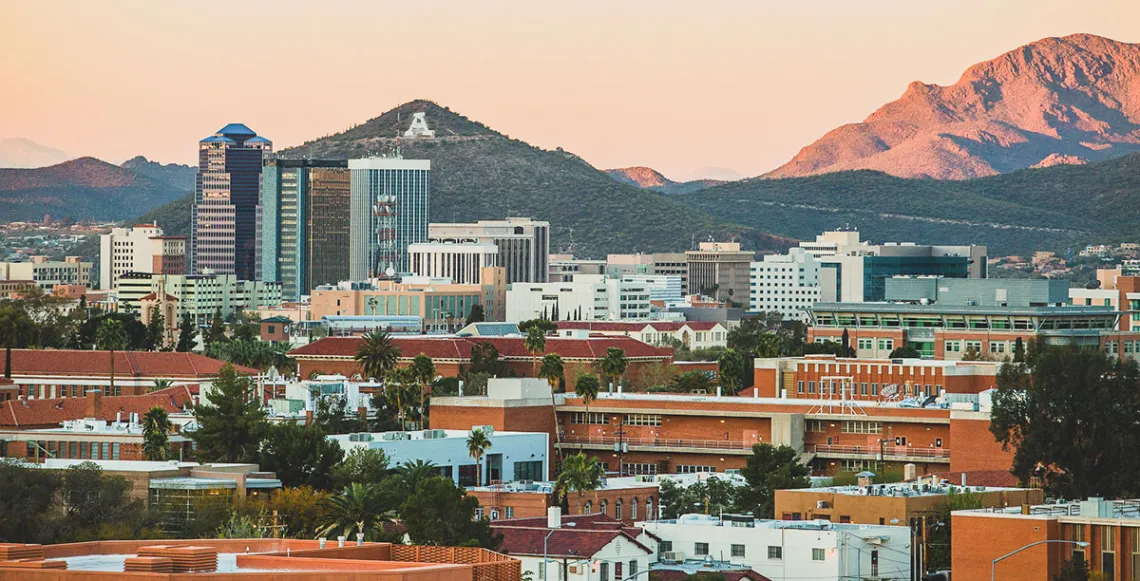
Downtown Tucson, Arizona as viewed from the University of Arizona campus.
In all three cases, inter-basin water is transferred, and for Tucson and Hermosillo, that water is transferred from a great distance—in Tucson’s case, from the Colorado River via the Central Arizona Project—increasing long-term risk given declining flows of the Colorado River due to climate change.
Zuniga-Teran, Stoker and their fellow researchers undertook their analysis less because of the obvious similarities in the cities than because of a key distinction, however. “The three cities show different governance approaches to water resources, a comparison of which allows us to extract lessons that can be transferred to other cities,” they report.
The research team was led by Rolando E. Díaz-Caravantes, professor in the Center for Studies in Health and Society at El Colegio de Sonora, and also included Facundo Martín, assistant professor at Universidad Nacional de Cuyo, Mendoza, Marta Bernabeau, doctoral fellow at the Institute for Human, Social and Environmental Sciences in Mendoza, and Christopher Scott, UArizona professor and director of the Udall Center.
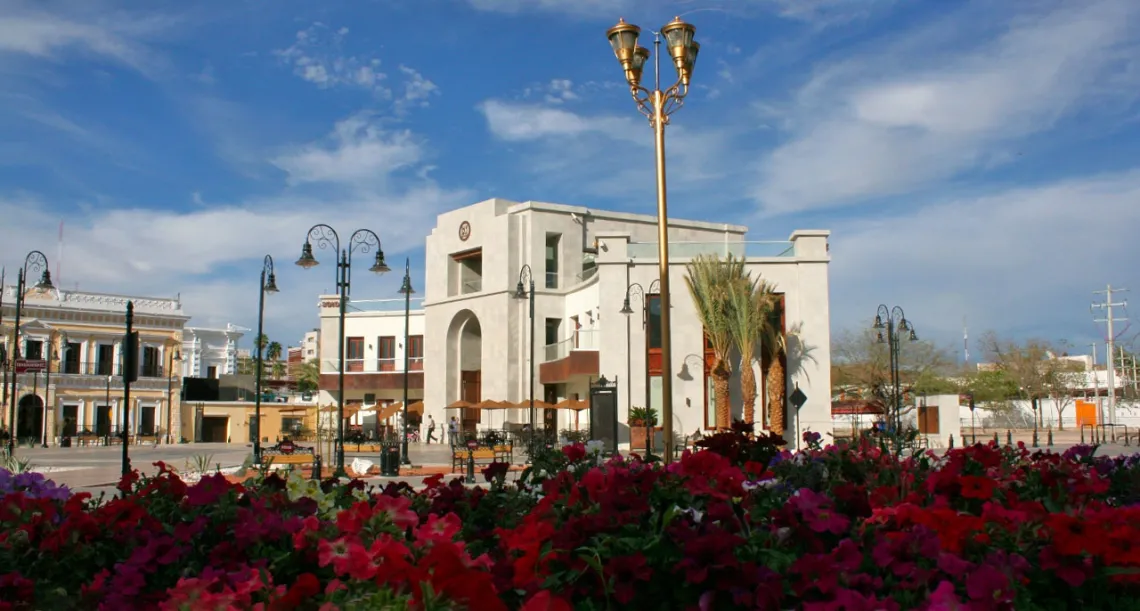
Plaza Bicentenario in Hermosillo, Sonora, Mexico. Photo by P.D. Tillman (CC BY-NC 2.0).
In its analysis of Tucson, Hermosillo and Mendoza, the team used an urban water security framework that considered five domains: sociodemographic, technological, ecological, economic and governance. Even considering the different governance approaches, the analysis reveals plenty of similarities. In the sociodemographic domain, for example, while all three cities have at least 97 percent water coverage, they have also have had “significant water quality challenges.”
From a technological perspective, the three metropolitan areas have a “high dependence on technology to exploit groundwater,” Tucson and Hermosillo significantly so. All three also rely on large, human-made reservoirs yet have overexploited their aquifers—though here the researchers report that Tucson has one advantage: “state and municipal water managers have implemented innovative technologies to increase water security (e.g., aquifer recharge, wastewater reuse and water banking).”
Tucson is also unique in how it is responding in the ecological domain. Whereas Hermosillo and Mendoza have no conservation strategy for riparian ecosystems, Tucson has two significant strategies. First, conservation boundaries established in the Sonoran Desert Conservation Plan limit development in ecologically sensitive areas, including riparian systems. Second, effluent is discharged into underground storage facilities along the Santa Cruz River, including the Sweetwater Wetlands water treatment facility, which, among other benefits, supports wildlife habitat.
The researchers found that institutional governance for all three metropolitan areas is decentralized at different levels, though adaptation planning in Tucson is long-term while in Hermosillo and Mendoza it is only short-term. The result for Tucson is that there is a coordinated effort to manage water resources locally and regionally, now and into the future. And yet for Tucson as well as Hermosillo and Mendoza, “groundwater levels have continued to decline.” Indeed, in Tucson and Hermosillo groundwater is still the main source of water supply, which is “risky due to overexploitation of aquifers and consequent problems with salinity,” say the researchers.
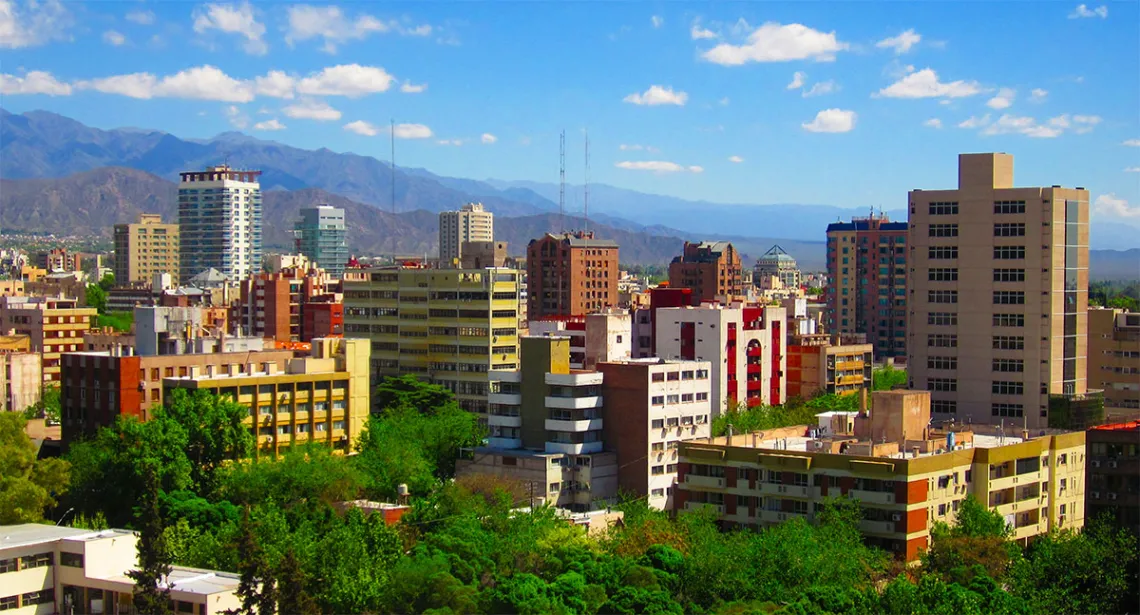
Downtown Mendoza, Argentina. Photo by Itsmemartin (CC BY-NC 2.0)..
Among the lessons learned from the team’s research are that groundwater will continue to play a critical role in urban water security for arid cities, but must be managed sustainably and must include “a recharge scheme to avoid depletion,” they say. Also, “hard-path” approaches to water management—such as inter-basin water transfers, recharge facilities and dams—are “a necessary but insufficient condition to assure water supply.” These engineered responses must be augmented by “soft path” approaches that reduce demand and increase efficiency. Additionally, riparian areas, which “provide multiple critical ecosystem services,” must be preserved.
How best to ensure these measures can succeed here as well as in arid cities around the world? According to Zuniga-Teran, Stoker and the other researchers, “the clearest option in terms of governance is to emphasize the maintenance of socio-ecological systems” because the threats to securing municipal water supplies are vast and complex.
Even Tucson, with its progressive water recharge program and long-term planning approach, is at risk, especially as the region’s population grows, demand for water increases and droughts and other changes in climate become more common. “The analysis of urban water security in these three cases makes it clear that it is easier to speak in terms of water insecurity than water security,” the researchers conclude.

